*pr-trip with Helsinki Biennial
The Helsinki Biennial 2023 art exhibition opened last Sunday in Helsinki’s Vallisaari island, the Helsinki City Art Museum HAM and among a few other places in Helsinki and online with the theme “New directions may emerge”. After having seen and photographed approximately 80% of the works on-the-ground, I share my favorite works and artistic highlights in this year’s Helsinki Biennial exhibition. I hope, it will also inspire you to see this exhibition, which features the works of 29 Finnish and international artists and art groups throughout the summer, from June 11 to September 17, 2023. The order of the works here in this article is not a ranking.
Helsinki Biennial 2023 provides a unique opportunity to enjoy world-class art, immerse yourself in the calming beauty of nature, and experience a deep connection with yourself and the world around you. The Biennial has once again gathered artists from Finland and abroad to Vallisaari to create an unforgettable connection between nature and man. The Helsinki Biennial 2023 offers art, nature, and experiences in the stunning environment of Vallisaari island, and you can get there by boat from the Market Square from the Helsinki Biennial pier. The price for a round trip is almost 20 euros, but the last Friday of every month is a free day when transportation to Vallisaari is free. The Biennial itself is a free art event, and you can also travel to the island on your own boat. This 2023 exhibition offers a particularly rich sample of the diversity of contemporary art and its unique power, which resonates deep within the visitor long after the exhibition.
1. Sanctuary, mist
One of the most impactful works of this year’s exhibition is the “Sanctuary, mist”, created by Sasha Huber and Petri Saarikko, located by the pond in Vallisaari. This site-specific installation is mystically beautiful and provokes profound feelings and thoughts in the viewer.
In Huber and Saarikko’s work, fog plays on the surface of the pond, creating an impression of a time and place that are both here and now, but at the same time somewhere distant and unknown. The piece creates a safe space where one can encounter oneself, nature, and the mysteries of the universe.
The viewer is easily left contemplating the meaning of their own existence in relation to the surrounding world. Personally, I could have sat by the pond watching this work for as long as possible, thinking about nothing. As a city dweller, you rarely get to be by the water when the mist actually creeps over it, so bringing this artificial mist, albeit created from real water, in the middle of a bright day to play with the wind felt like a true gift from heaven.
“Sanctuary, mist” offers a rare opportunity to explore the relationship between humans and nature, and to examine our own place in the world and perhaps our ever-changing moods. The work offers both a sanctuary and an invitation to confront our own fears and hopes. Huber and Saarikko’s artwork brings together art, philosophy, and nature in a way that leaves a deep and lasting impression on the viewer.
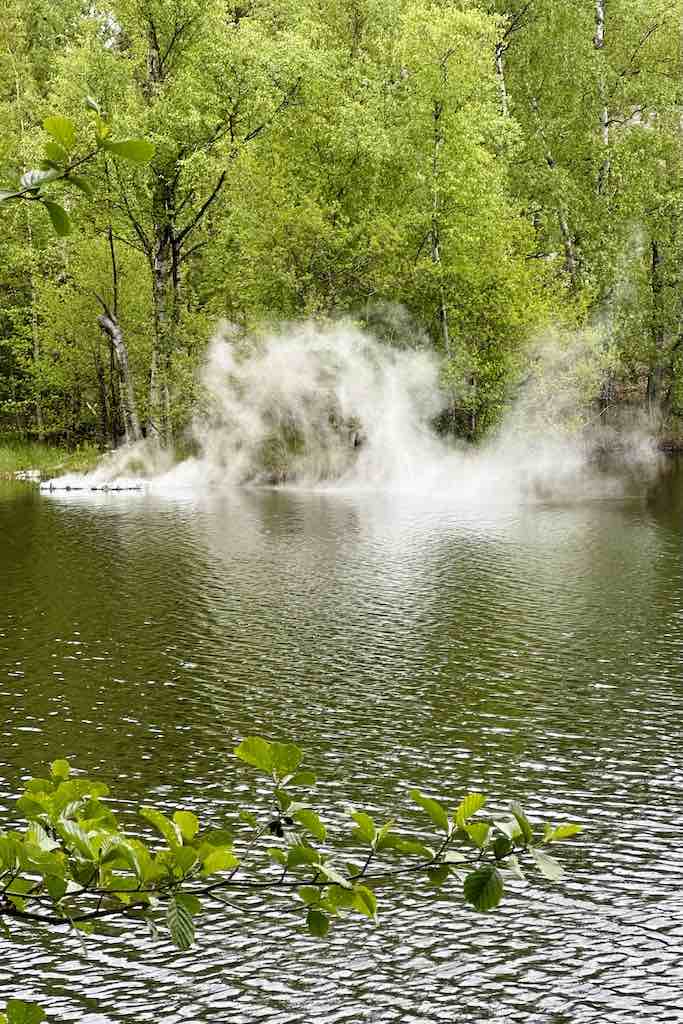
2. PHOSfate
Another interesting work in the Helsinki Biennial exhibition is “PHOSfate”, created by Mohamed Sleiman Labat and Pekka Niskanen. This site-specific installation, realized in the form of a sand garden, offers the viewer a new perspective on nature, the cyclicity of life, and human’s role in it.
“PHOSfate” is conjured from sand, a substance often associated with the barrenness and lifelessness of the desert. But Labat and Niskanen challenge this perception by planting life and edible plants, such as carrots, in their sand garden. This contrast between the dryness of the sand and the greenery of the plants creates a strong visual impression and evokes thoughts about the power of life and its ability to adapt to different conditions.
Attached is a photo I took of the installation, where a carrot seed has just begun to sprout. This provides an opportunity to follow the life cycle of the work and its metamorphosis over time. It will be very interesting to see how “PHOSfate” grows and develops over the next few weeks, as the artwork allows us to observe the growth process that often goes unnoticed in our busy everyday lives. It reminds us of how life is continuous growth and change, and how we all are part of this vast web of life.
Growing carrots begins with sowing seeds, preferably in the spring when the soil temperature has risen enough. Carrot seeds are sown directly in the open field growing site, and the seeds germinate best when the soil is moist but not too wet. The carrot first grows foliage and the root begins to form underneath, and usually about 2-4 months after sowing the orange carrot root is ready to be harvested. Carrots require a sunny growing site and a well-draining, loamy soil, but in this work the growth has started well in mere sand!
“PHOSfate” is thus a work that continues to change and grow, just like us. It is a living proof that an artwork is not just something to be looked at, but also something that lives, breathes, and grows with us. The Helsinki Biennial 2023 thus offers an opportunity to experience art that changes and evolves over time, offering a new, dynamic way to experience and understand art.
In addition, I personally experienced that the world hunger problem has now been solved as the food is clearly able to grow even in the sands of deserts. And that was quite an amazing feeling.
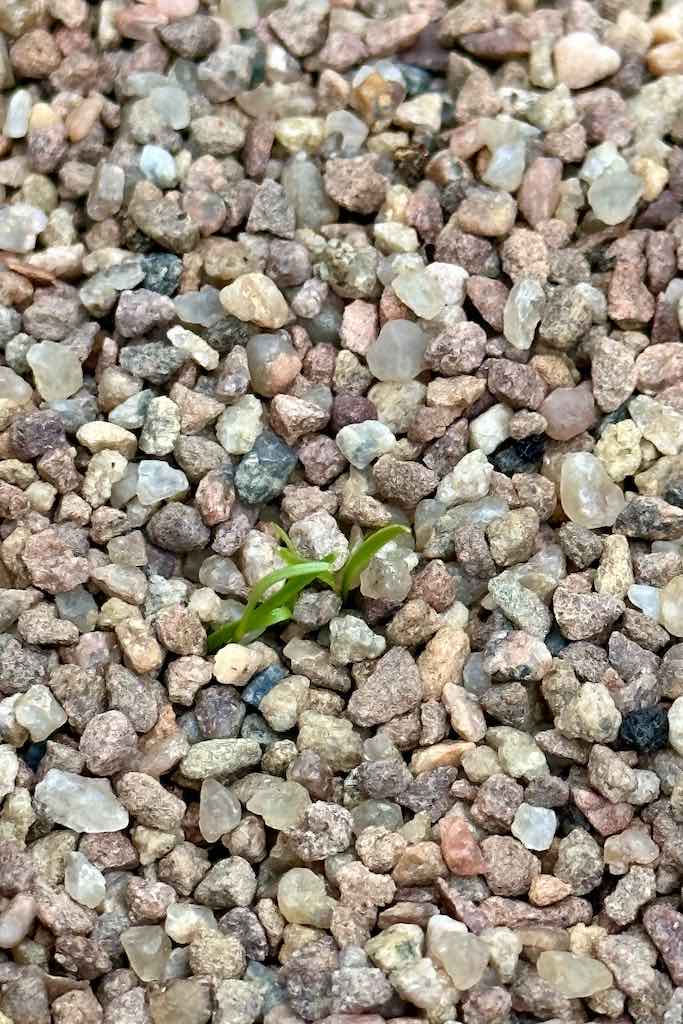
3. Hypoxia
Emilija Škarnulytė is an artist born in Lithuania, and her video work “Hypoxia” takes its viewers on a diving journey deep into the seabed. The work “Hypoxia” is on display in one of the many cool chambers carved into the rocks of Vallisaari, which provide a perfect environment for this fascinating and profound work. During the video the viewer gets to experience the mystery and beauty of the seabed in an almost tangible way. Škarnulytė’s work reminds us of the vastness of the sea, its beauty, but also its vulnerability.
In the cool and peaceful chamber, the viewer can imagine being deep in the sea, where the play of light and shadow creates a unique atmosphere. The work not only takes the viewer to the seabed but also provokes thoughts and discussions about the importance of protecting the seas.
In addition, Škarnulytė has created stunning glass sculptures, which are on display in the same space with the video installation. These sculptures, illuminated by beautiful moving blue light, along with an interesting soundscape, complement the experience created by the video installation. “Hypoxia” is an example of how art can serve as a tool for increasing environmental awareness and connecting people to a common goal: preserving the Earth for future generations.
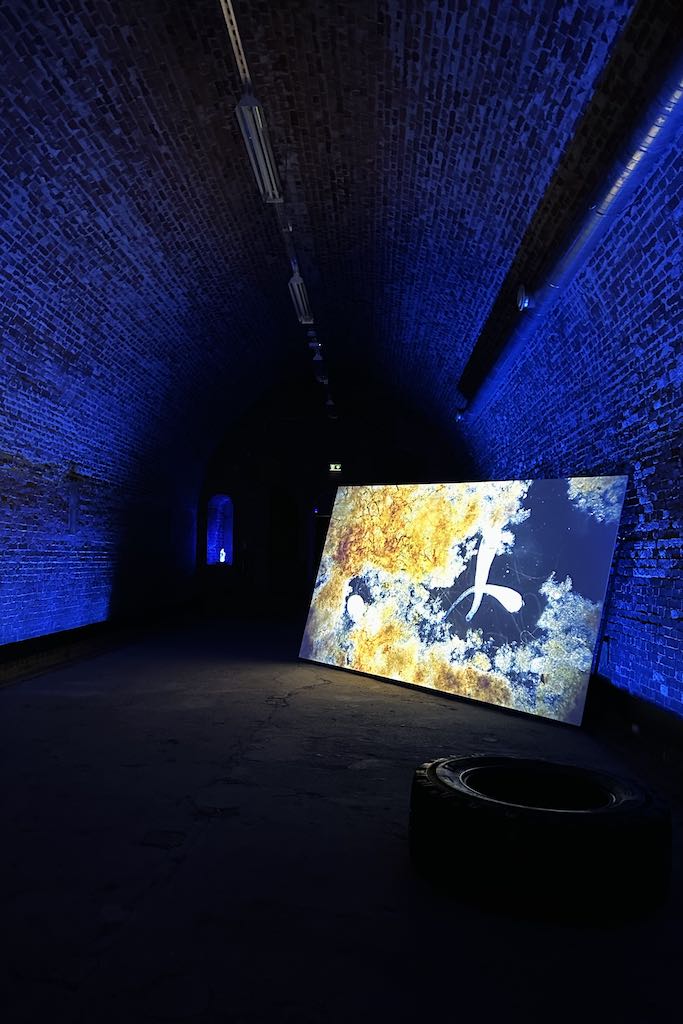
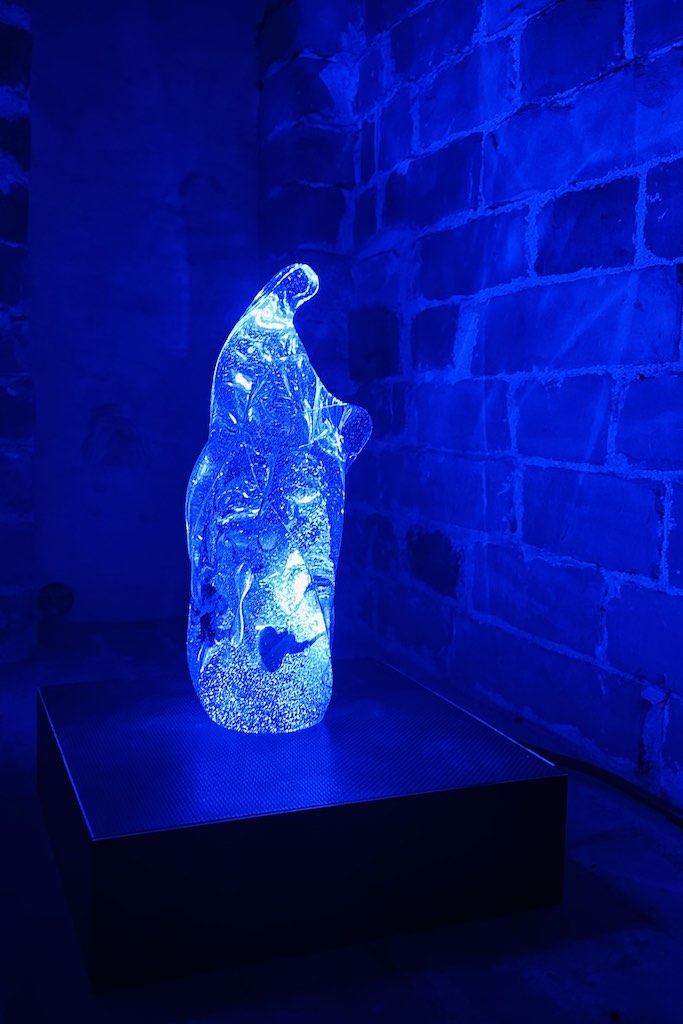
4. coadapted with
Alma Heikkilä’s work “coadapted with | sopeutua yhdessä” is also one of the absolute highlights of the Helsinki Biennale 2023 exhibition. As an artist, Heikkilä is known for often using natural materials in her works and examining the relationship between humans and nature, as well as environmental issues.
This site-specific work is located in the middle of the forest, where white fabrics and sculpture have been carefully arranged into an environmentally friendly installation. The white fabrics will change over time as pigments made from Helsinki plants mix with rainwater, dyeing the fabrics.
The work is initially a tabula rasa, a white canvas waiting for nature’s own pigments and weather to occur. At the beginning of the Biennale, you can see the shadows of tree leaves playing on the canvases as the wind rustles in the treetops and the sun shines through the branches of the trees. At the same time you can listen to the birds singing and the silence of the forest, which makes the experience calming and meditative.
“coadapted with | sopeutua yhdessä” is a work that lives and changes over time. Its change is part of its magic and it invites viewers to return to the exhibition to see how the work has evolved and changed under the influence of summer rains. The work is dynamic and alive and it changes and grows just like the nature around us.
Heikkilä’s work also raises thoughts about weather conditions and their impact on nature and our lives. In a dry summer, the work may remain white, while in a rainy summer, its colors will explode on the fabric. This makes the work interesting and unpredictable and raises thoughts about the effects of weather conditions on nature and its delicate balance.
“coadapted with | sopeutua yhdessä” is a great example of how art and nature can live in harmony together, and how art can reflect the changes in nature and arouse feelings and thoughts in us.
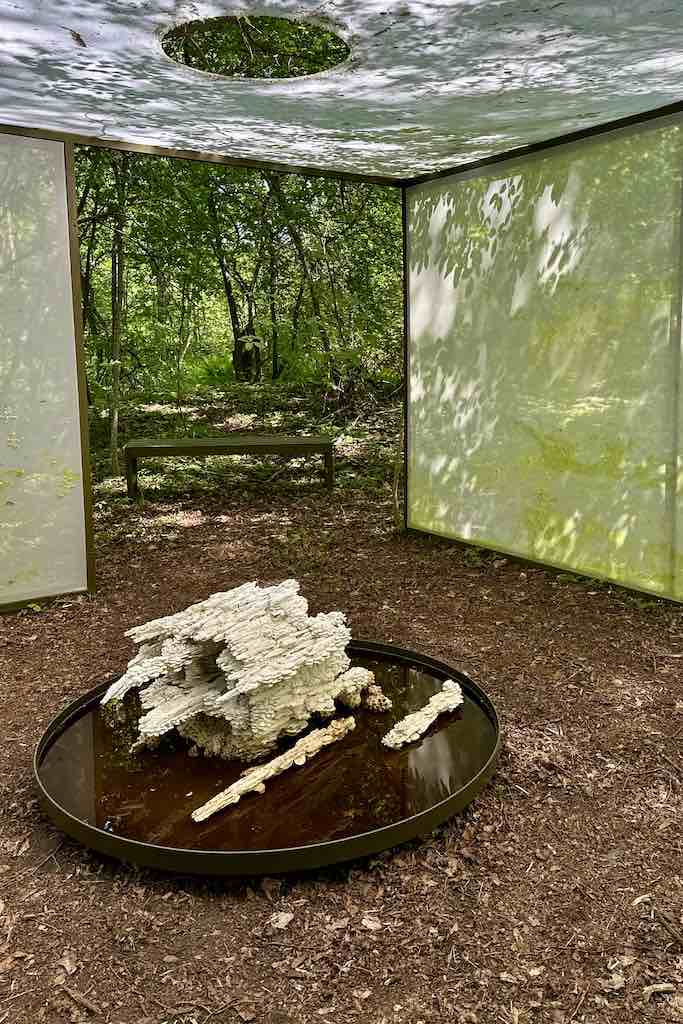
5. Deep Down Tidal
Tabita Rezaire’s work “Deep Down Tidal” is one of the most interesting video installations of the Helsinki Biennale 2023 exhibition and is on display at the Helsinki Art Museum, HAM, in Kamppi in Helsinki centre. This nearly 20-minute work offers its viewers an intense and immersive audiovisual experience that explores maritime communication in multiple dimensions.
The work is presented on a curved, panoramic video screen, the mirror image of which is reflected from the floor. This format makes the visual experience even more fascinating. Viewers can sit comfortably on cushioned seats and let the work take them on a journey into the depths of the sea.
“Deep Down Tidal” is a fast-paced and informative work that tells about the complex network system located in the seas – how communication takes place deep in the seabed and how it affects our lives on land. The work progresses at a fast pace, just like modern music videos, keeping the viewer’s interest up all the time. It has a breathless pace, but it is at the same time informative and profound.
However, it should be noted that the work’s fast pace and rich visual imagery can make the following of the subtitles challenging and the experience may remain somewhat superficial if the story is not understood. But even if the understanding of all the words remains deficient, the work’s visual world and the energy it conveys can create an impressive experience.
Rezaire’s “Deep Down Tidal” work reminds us of how complex and fascinating systems there are under visible nature and how dependent we are on them. The work leaves the viewer pondering the secrets of the seabed, networks and their importance to our lives – perhaps hopeful of their own home theater where they could similarly immerse themselves comfortably in art and movie worlds.
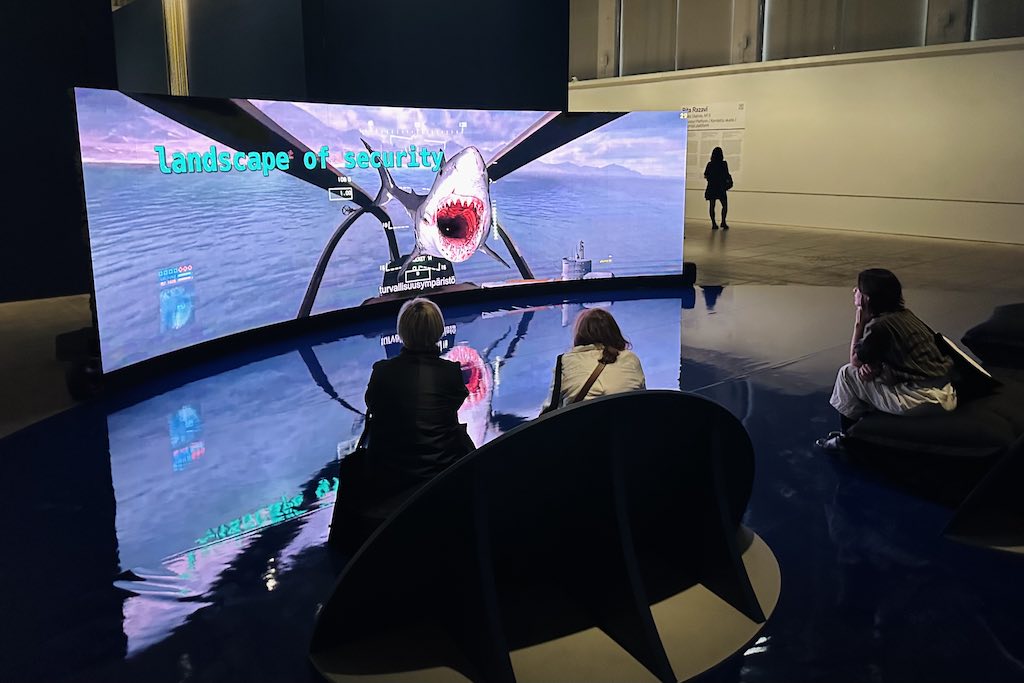
Honorable Mention
Tuula Närhinen’s installation “The Plastic Horizon” is a powerful visual statement on the impacts of modern consumer society on our nature. The artist has been collecting plastic waste from the shores of Helsinki since 2006, nearly as long as I have been blogging, and she has simultaneously assembled a multicolored collection of various plastic objects and trash. These finds by Närhinen have formed the basis for this work “The Plastic Horizon”, which shows us in a tangible way how much garbage ends up in nature – and especially in our water bodies.
In the installation the collected garbage is grouped by color, creating a rainbow-like spectrum. This gives the work a visually pleasing appearance, but at the same time it reveals how plastic trash can be both beautiful and shocking at the same time. The beauty confuses and hides the true meaning of the work: that each colorful plastic object in this work has caused harm to nature.
The amount of waste in the work is startling. It reflects our society’s consumption habits and behavior and challenges us to think about our own choices. It raises the question of how many of these objects could have been reusable or recyclable? And how many of these objects were actually necessary?
Närhinen’s “The Plastic Horizon” not only shows us how much garbage accumulates on our shores, but also reminds us that every object in this installation has been part of someone’s life. It challenges us to think about how our choices and actions affect our environment – and how we can make better choices in the future.
“The Plastic Horizon” is an artistic and profound commentary on the impacts of modern consumption culture and it is surely one of the most memorable works of the Helsinki Biennale 2023 exhibition.
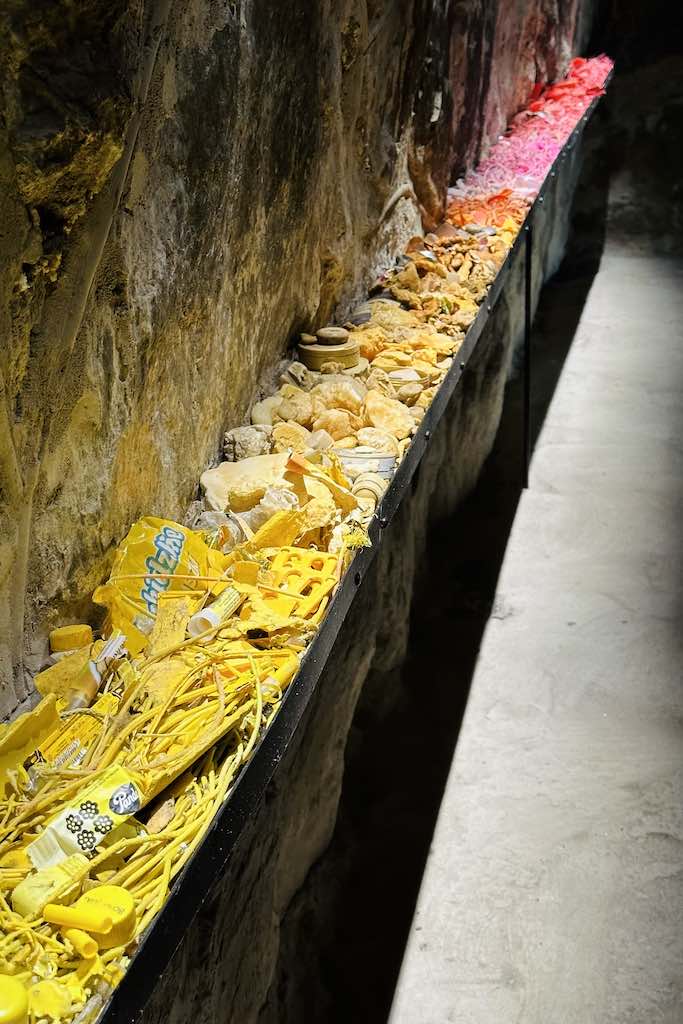
Helsinki Biennale’s Best Nature Selfie Spots
In addition to beautiful sea views, Vallisaari has also a lot of beautiful nature. Here are a few beautiful natural views in Vallisaari that are perfect for the background of your own selfie. However, remember to stay on the fenced walking path and remember that when moving in nature, you should always respect the environment.
- Nature Trail: The nature trail of Vallisaari offers stunning views of the island’s diverse nature. On this route, you can take a picture of yourself in a forested environment.
- Vallisaari Fortifications: The old fortifications of Vallisaari provide a unique backdrop for selfies. However, when taking pictures, it is important to remember that the fortifications are historical sites that need to be preserved intact.
- Vallisaari pond: This small pond in the middle of the island provides a beautiful backdrop for selfies. The mirror-calm water of the pond reflects the surrounding nature, creating a stunning backdrop for photos.
- Kuninkaansaari island (King’s island): This small island next to Vallisaari is also known for its stunning sea views and silent nature. There goes a road surrounded by sea from Vallisaari to Kuninkaansaari.
- Aleksanterinpatteri viewing platform: The highest point of the island is the Aleksanterinpatteri viewing platform, which offers stunning views of both the sea and the island’s nature. This place provides a stunning backdrop for selfies.
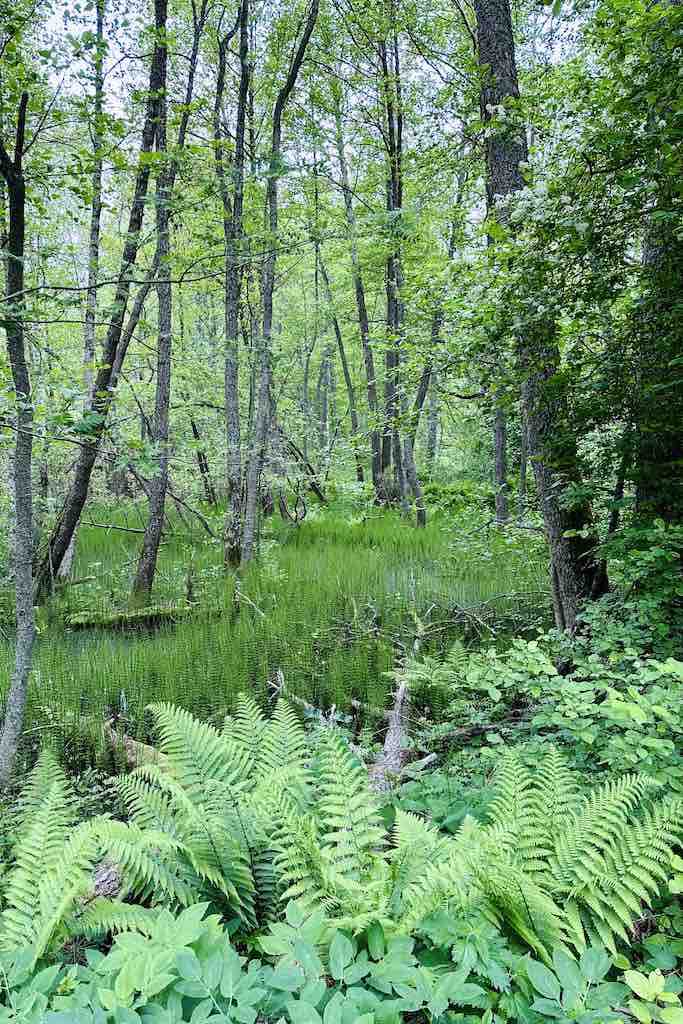
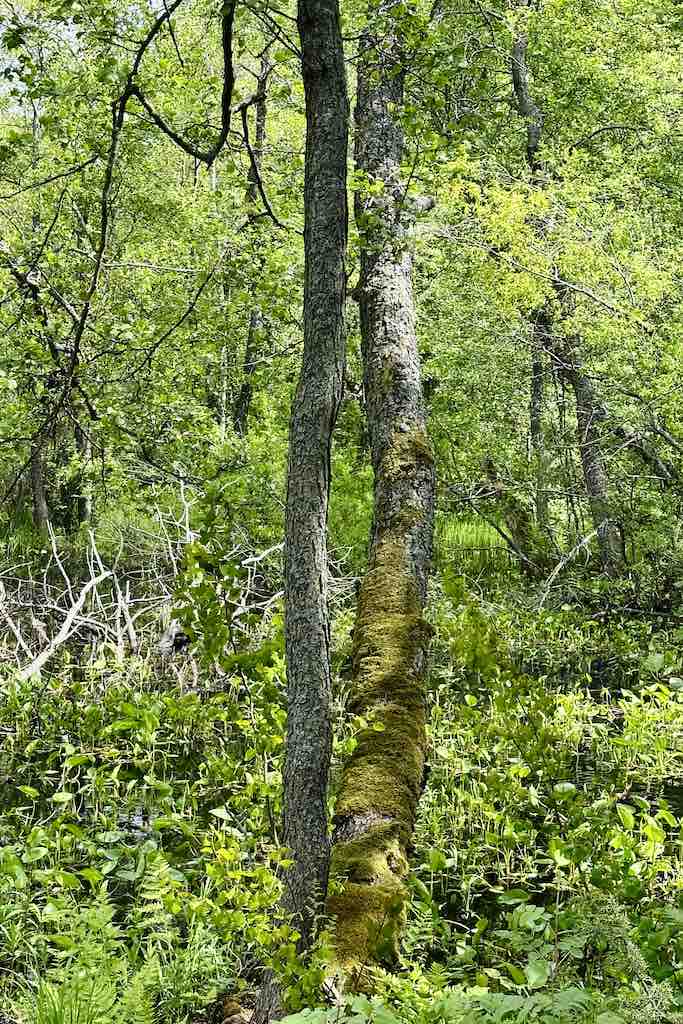
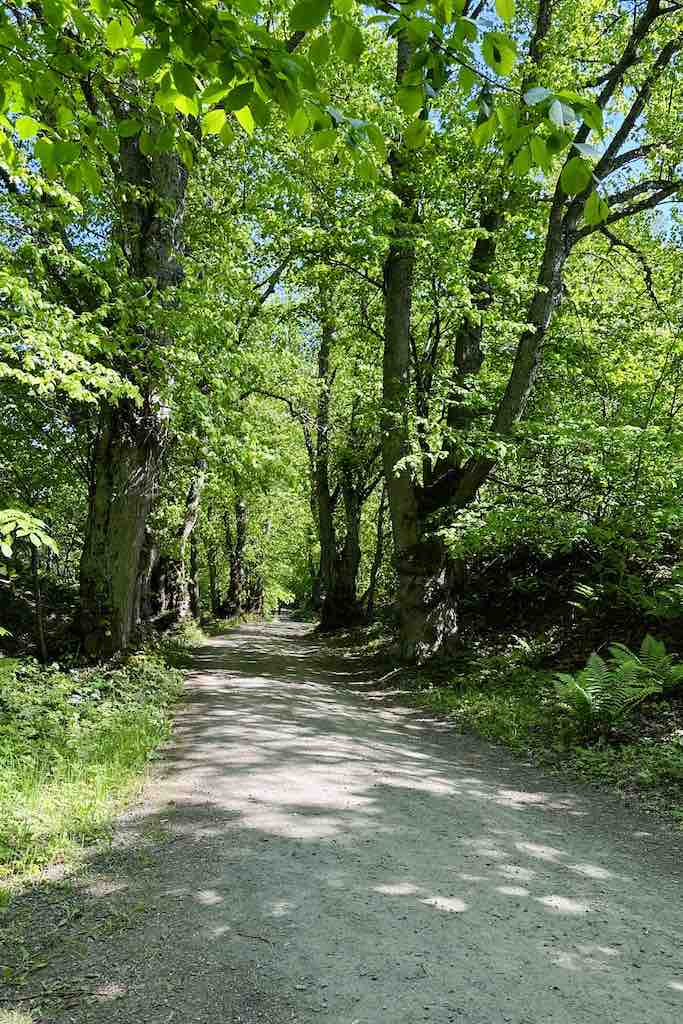
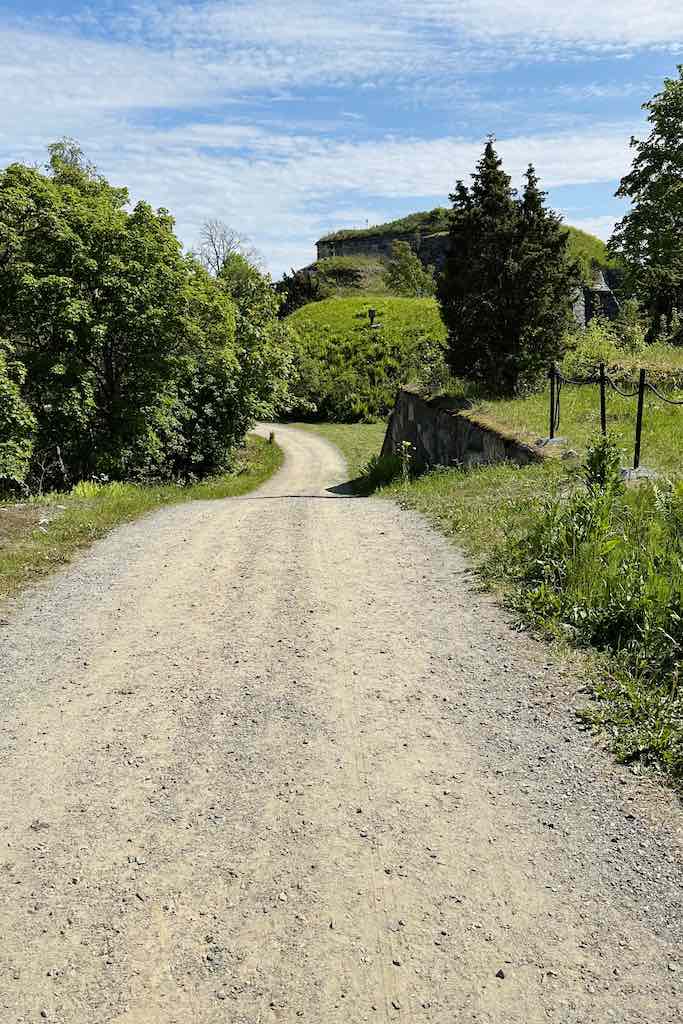
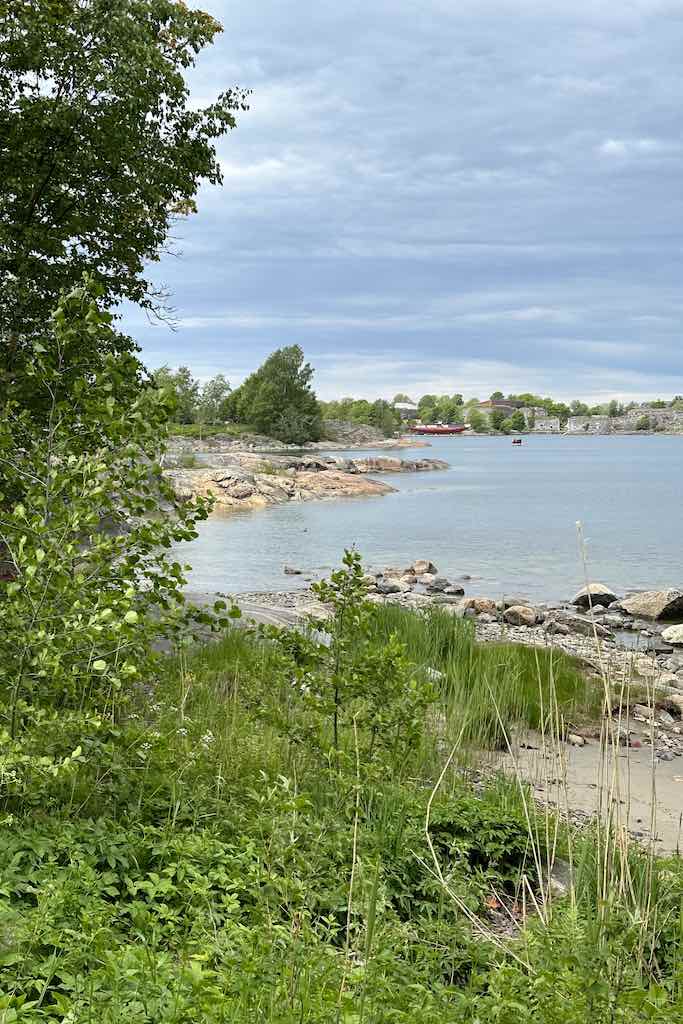

Useful links:


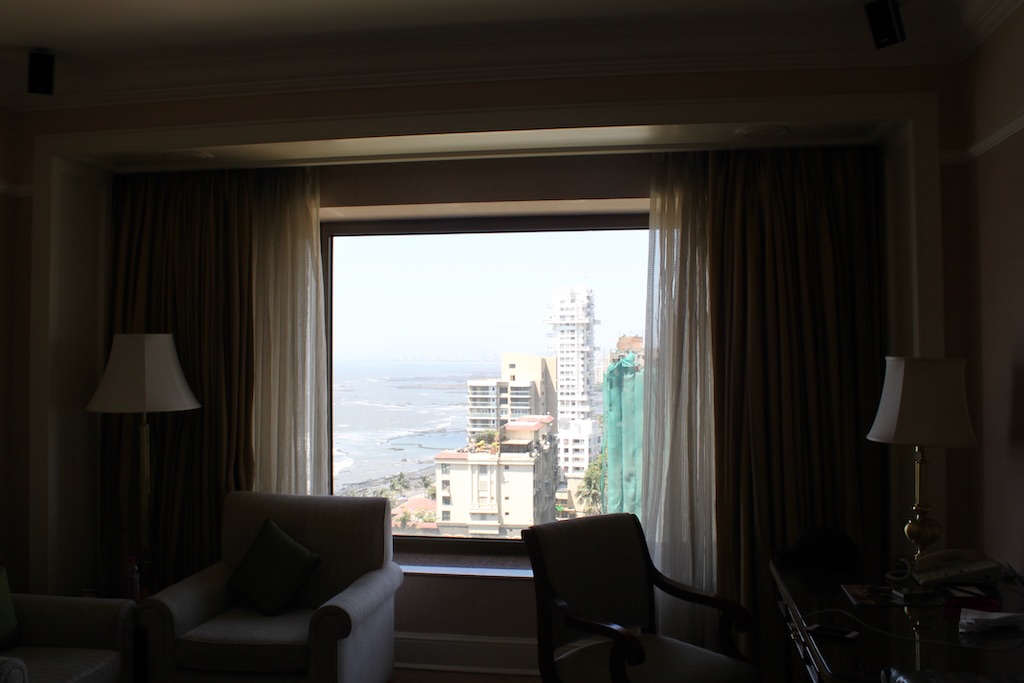

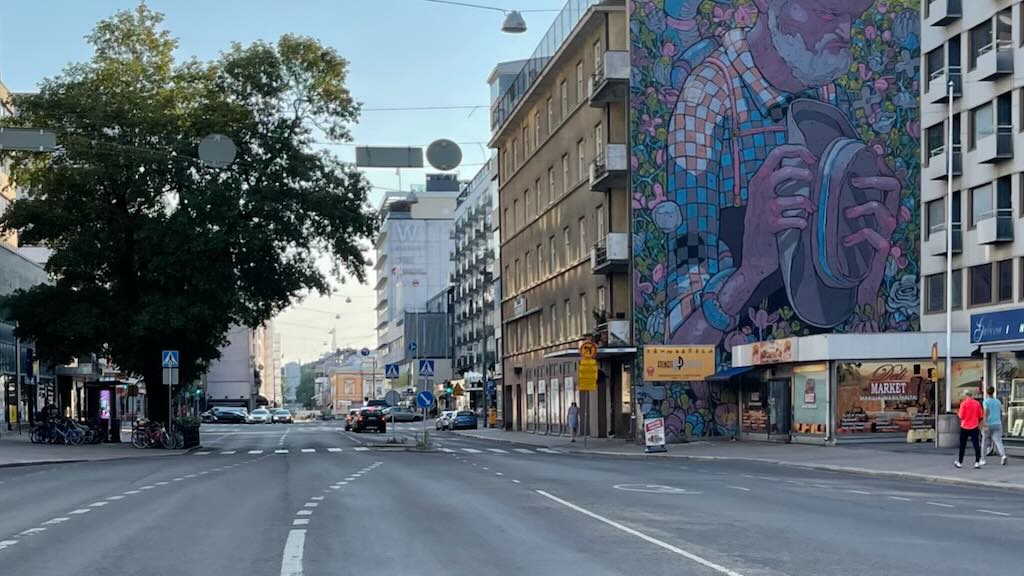
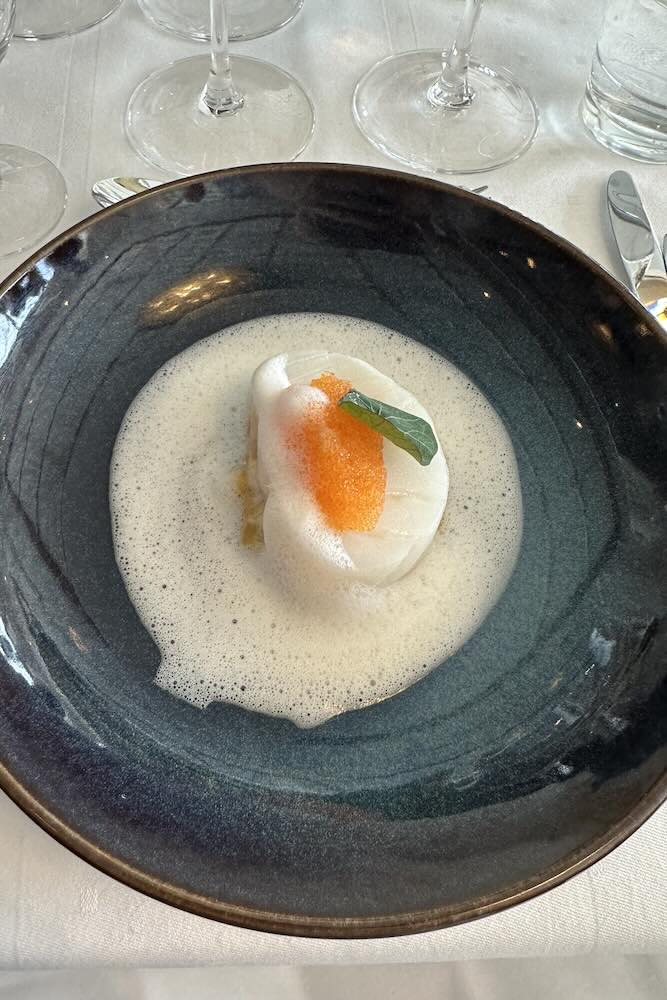
Leave a comment